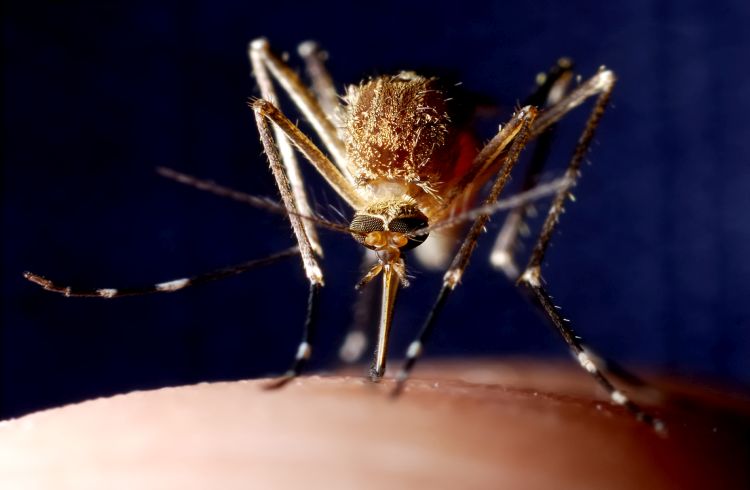Dengue Fever: What Travelers Need to Know
Dengue is on the rise around the world. Can you be immunized, what are the symptoms and how is it treated? Here’s what travelers need to know about dengue fever before visiting tropical destinations.
 Photo © iStock.com/CHBD
Photo © iStock.com/CHBD
- What is dengue fever?
- Symptoms of dengue fever
- Dengue reinfections
- Is there a vaccine for dengue?
- Dengue fever prevention
What is dengue fever?
Dengue fever is carried by the Aedes aegypti and Aedes albopictus mosquitoes, which are known to bite both in daytime and nighttime.
Although dengue is nicknamed “breakbone fever” for its severe muscle aches and fevers, most people experience mild symptoms. However, it can be life-threatening, especially for children or people with underlying health conditions.
And dengue is on the rise globally – cases have doubled each year since 2021, and 2024 saw a record-breaking number of cases. This increase can be attributed in large part to hotter, wetter weather, which has allowed the habitat of dengue-bearing mosquitos to expand.
Though dengue is most common in tropical or subtropical areas of the Americas, cases have also been reported in the Eastern Mediterranean, Europe, Southeast Asia, Africa, and the Western Pacific.
Symptoms of dengue fever
Symptoms of dengue usually appear 4-10 days after being bitten and include:
- pain in muscles or joints
- high fever (104°F/40°C)
- headache
- nausea
- vomiting
- a flat, red rash
If you have dengue, rest as much as possible, stay hydrated, and take acetaminophen to alleviate pain and fever.
Severe cases can progress to DHF (dengue hemorrhagic fever), which can be life-threatening.
Symptoms of severe dengue fever usually start a day or two after your fever goes down and include:
- severe stomach pain
- persistent vomiting
- bleeding from gums or nose
- blood in urine, stool, or vomit
- difficult or rapid breathing
If you’ve been traveling in an area where dengue fever is known to occur and experience any of the above symptoms, seek medical assistance immediately.
Dengue reinfections
While many dengue cases are mild, reinfections can cause much more severe reactions.
Dengue is divided into four strains, or serotypes. If a person gets infected again with a different strain of dengue, it can create more severe illness, including progression to DHF. Unfortunately, the first dengue infection frequently goes unnoticed or is attributed to a flu-like virus.
Is there a vaccine for dengue?
There are currently two dengue vaccines available – however, they are recommended only for children 9 through 16 years old who have been previously infected with dengue and live in areas where dengue is common. And manufacture of Dengvaxia, the only vaccine available in the US, will be discontinued in 2025 due to lack of global demand.
The other vaccine, TAK-003 (aka Qdenga), was prequalified by the World Health Organization (WHO) in May 2024 and is approved for use in the EU, Indonesia, Thailand, Argentina, and Brazil, among others.
According to WHO, travelers living in non-endemic countries who have previously been infected might benefit from the TAK-003 vaccine before traveling to an endemic country. Check with your doctor or healthcare provider to see if they feel a vaccine would be beneficial.
Planning a tropical adventure? Find out how travel insurance can cover lost or stolen baggage, sudden illness, or other mishaps.
Dengue fever prevention
The best way to avoid dengue fever is to not get bitten by mosquitoes. Take a multi-step approach:
- use a mosquito net if sleeping outdoors or with open windows
- apply insect repellent to the skin
- wear permethrin-treated clothing and long sleeves and pants when outdoors
Avoid areas with standing water such as upturned canisters, flowerpots, tires that may contain water, and lakes or large puddles. Public health campaigns are focusing on the destruction of these standing water breeding grounds and implementing proper water storage options to try to eliminate or decrease the Aedes mosquito population.
Travelers headed to areas with dengue fever present should travel prepared. Use caution when deciding which time of year to travel, especially during rainy seasons.
While dengue fever can be dangerous, it shouldn't stop you exploring the world. With the proper planning and by taking the right precautions, you can still travel to amazing tropical destinations.
Related articles
Simple and flexible travel insurance
You can buy at home or while traveling, and claim online from anywhere in the world. With 150+ adventure activities covered and 24/7 emergency assistance.
Get a quote

No Comments